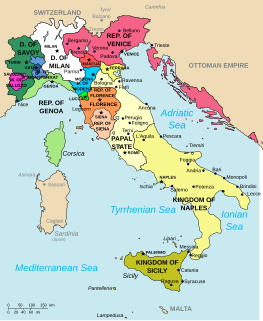 W
WThe Italian city-states were numerous political and independent territorial entities that existed in the Italian Peninsula from the beginning of the Middle Ages until the proclamation of the Kingdom of Italy, which took place in 1861.
 W
WCaptain of the People was an administrative title used in Italy during the Middle Ages, established essentially to balance the power and authority of the noble families of the Italian city-states.
 W
WA Carroccio was a large four-wheeled wagon bearing the city signs around which the militia of the medieval communes gathered and fought. It was particularly common among the Lombard, Tuscan and, more generally, northern Italian municipalities. Later its use spread even outside Italy. It was the symbol of municipal autonomy. Priests celebrated Mass at the altar before the battle, and the trumpeters beside them encouraged the fighters to the fray.
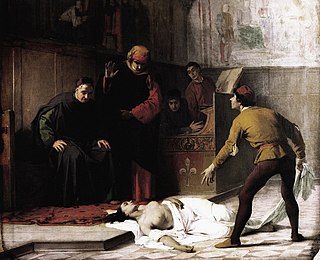 W
WThe Gonfalonier was the holder of a highly prestigious communal office in medieval and Renaissance Italy, notably in Florence and the Papal States. The name derives from gonfalone, the term used for the banners of such communes.
 W
WThe Duchy of Mantua was a duchy in Lombardy, Northern Italy. Its first duke was Federico II Gonzaga, member of the House of Gonzaga that ruled Mantua since 1328. The following year, the Duchy also acquired the March of Montferrat, thanks to the marriage between Gonzaga and Margaret Paleologa, Marchioness of Montferrat.
 W
WThe Duchy of Parma is a noble estate and title created in Italy in 1545. Originally a title of the Farnese family, in 1731 the Duchy passed to the Habsburgs and in 1748 to the Bourbons. It was invaded by Napoleon and annexed to France, and had its sovereignty restored in 1814, albeit with Napoleon's wife, Marie Louise, as its reigning duchess. With her death, the Duchy was restored to the Bourbons, only to be formally abolished in 1859 as it was integrated into the new Italian state.
 W
WThe Duchy of Ferrara was a state in what is now northern Italy. It consisted of about 1,100 km2 south of the lower Po River, stretching to the valley of the lower Reno River, including the city of Ferrara. The territory that was part of the Duchy was ruled by the House of Este from 1146 to 1597.
 W
WThe Republic of Florence, officially the Florentine Republic, was a medieval and early modern state that was centered on the Italian city of Florence in Tuscany. The republic originated in 1115, when the Florentine people rebelled against the Margraviate of Tuscany upon the death of Matilda of Tuscany, who controlled vast territories that included Florence. The Florentines formed a commune in her successors' place. The republic was ruled by a council known as the Signoria of Florence. The signoria was chosen by the gonfaloniere, who was elected every two months by Florentine guild members.
 W
WForlì is a comune (municipality) and city in Emilia-Romagna, Northern Italy, and is the capital of the province of Forlì-Cesena. It is the central city of Romagna.
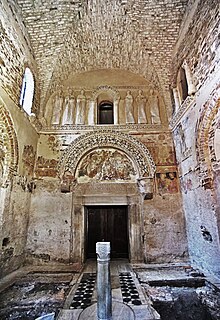 W
WThe Duchy of Friuli was a Lombard duchy in present-day Friuli, the first to be established after the conquest of the Italian peninsula in 568. It was one of the largest domains in Langobardia Major and an important buffer between the Lombard kingdom and the Slavs, Avars, and the Byzantine Empire. The original chief city in the province was Roman Aquileia, but the Lombard capital of Friuli was Forum Julii, modern Cividale.
 W
WThe Republic of Lucca was a historic state of Italy, which lasted from 1160 to 1805 on the central Italian peninsula.
 W
WThe Duchy of Milan was an Italian state located in northern Italy and part of the Holy Roman Empire. The Duchy was created in 1395 by Gian Galeazzo Visconti, then the Lord of Milan, and a member of the important Visconti family, that had been ruling the city since 1277.
 W
WThe Republic of Pisa was a de facto independent state centered on the Tuscan city of Pisa, which existed from the 11th to the 15th century. It rose to become an economic powerhouse, a commercial center whose merchants dominated Mediterranean and Italian trade for a century. before being surpassed and superseded by the Republic of Genoa.
 W
WPodestà was the name given to the holder of the highest civil office in the government of the cities of Central and Northern Italy during the Late Middle Ages. Sometimes, it meant the chief magistrate of a city state, the counterpart to similar positions in other cities that went by other names, e.g. rettori ("rectors").
 W
WThe Duchy of Reggio was one of the states that belonged to the Duchy of Modena and Reggio, ruled by the House of Este, in the north of Italy, in a territory now belonging to the Province of Reggio Emilia. The capital was Reggio.
 W
WThe Republic of Genoa was an independent state and maritime republic from the 11th century to 1797 in Liguria on the northwestern Italian coast, incorporating Corsica from 1347 to 1768, and numerous other territories throughout the Mediterranean and the Black Sea.
 W
WThe Free Municipality of Sassari or Republic of Sassari was a state in the region of Sassari in Sardinia during the 13th and 14th centuries, associated first with the Republic of Pisa as a semi-autonomous subject and later with the Republic of Genoa as a nominally independent ally. It was the first and only independent city-state of Sardinia during the early renaissance.
 W
WThe Lombard Principality of Salerno was a South Italian state, formed in 851 out of the Principality of Benevento after a decade-long civil war. It was centred on the port city of Salerno. Although it owed allegiance at its foundation to the Carolingian emperor, it was de facto independent throughout its history and alternated its allegiance between the Carolingians and their successors in the West and the Byzantine emperors in the east.
 W
WThe Republic of Siena was a historic state consisting of the city of Siena and its surrounding territory in Tuscany, central Italy. It existed for over four hundred years, from 1125 to 1555. During its existence, it gradually expanded throughout southern Tuscany becoming one of the major powers of the Middle Ages, and one of the most important commercial, financial and artistic centers in Europe.
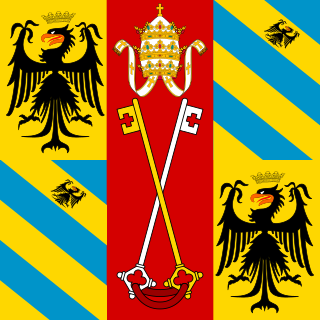 W
WThe Duchy of Urbino was a fief of the Holy See in central-northern Italy.
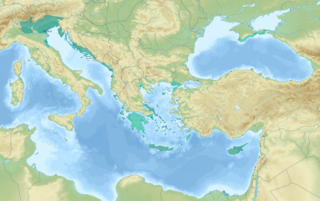 W
WThe Republic of Venice or Venetian Republic, traditionally known as La Serenissima, was a sovereign state and maritime republic in parts of present-day Italy which existed from 697 AD until 1797 AD. Centered on the lagoon communities of the prosperous city of Venice, it incorporated numerous overseas possessions in modern Croatia, Slovenia, Montenegro, Greece, Albania and Cyprus. The republic grew into a trading power during the Middle Ages and strengthened this position in the Renaissance. Citizens spoke the still-surviving Venetian language, although publishing in (Florentine) Italian became the norm during the Renaissance.